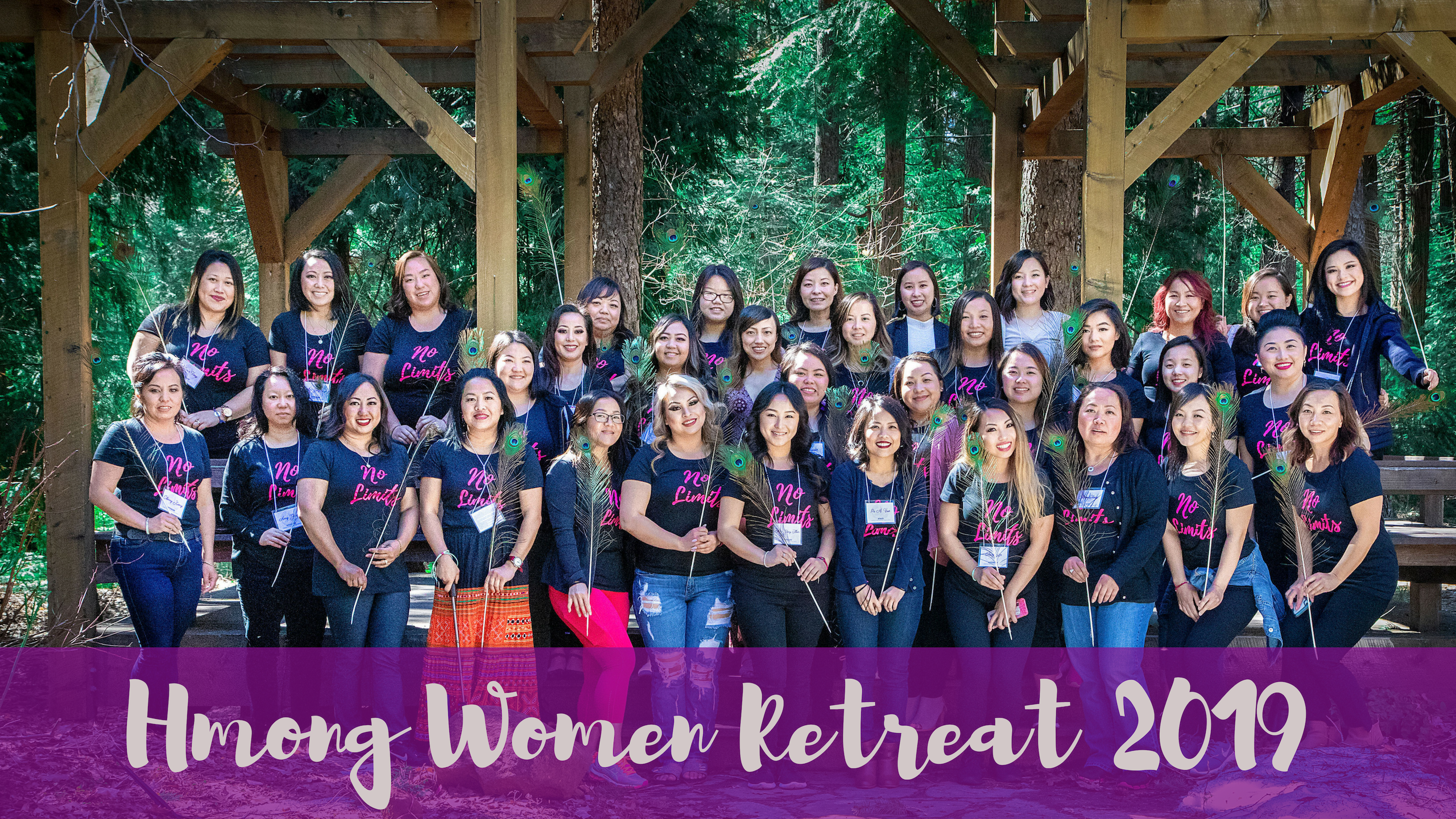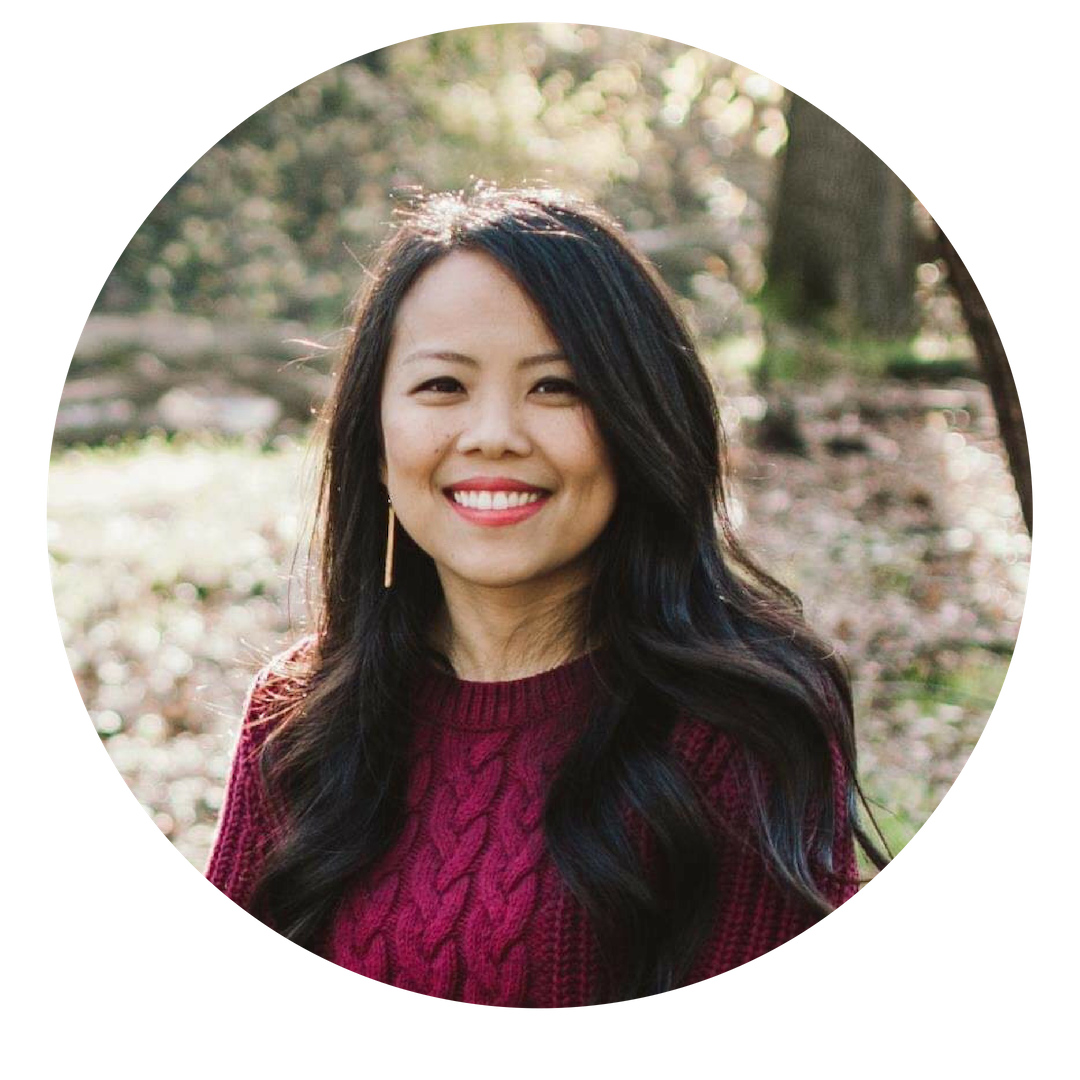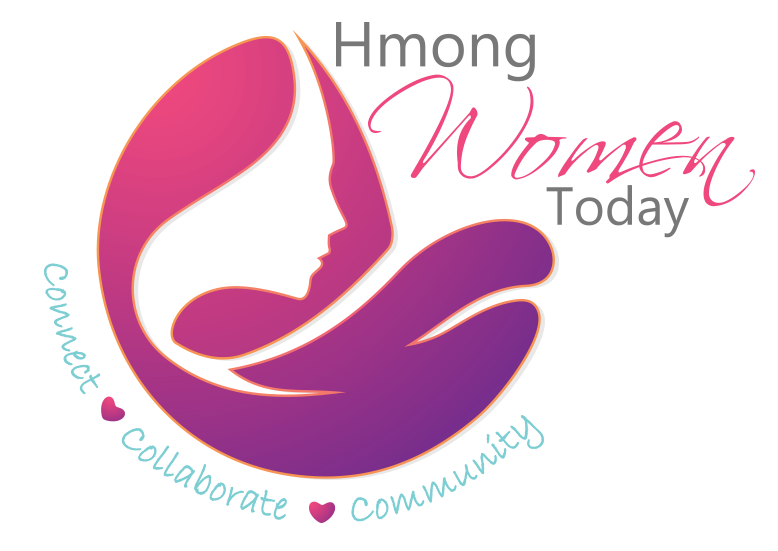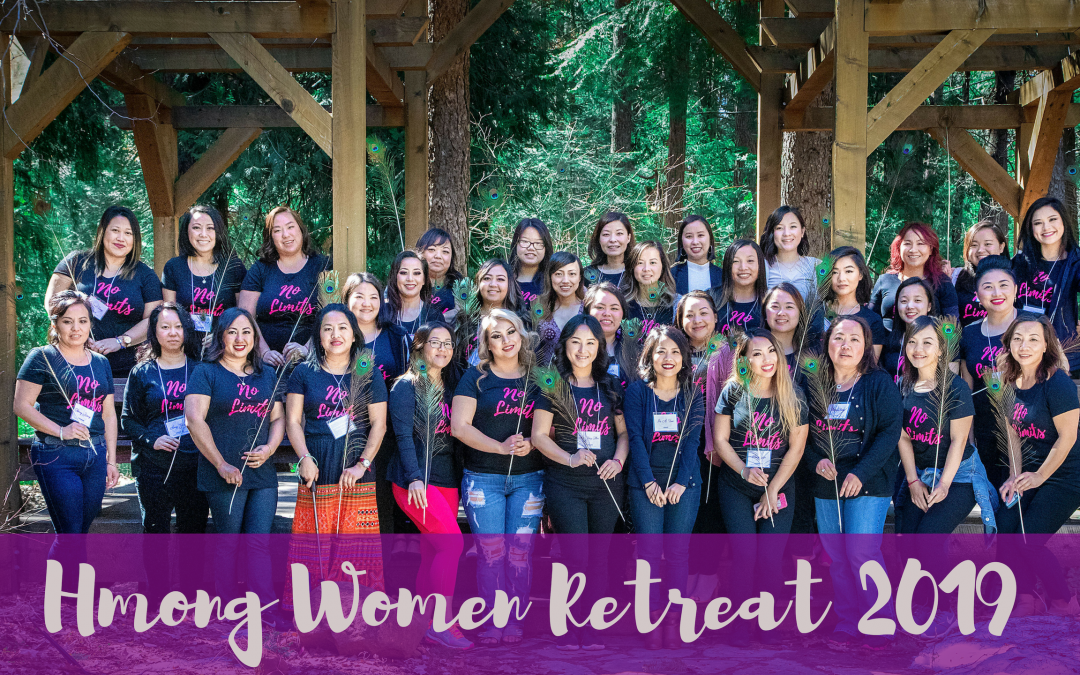
It’s been one day since the Hmong Women Retreat, one day since we said goodbye to Harmony Ridge Lodge and to women who are fierce and accomplished and beautiful, one day since we called our souls home with us. “Mus
Once home, I found myself laying in bed, scrolling through Facebook for images, for proof that the retreat really did happen. For a short while there was nothing–all quiet on the Western Front if you will–but as if on the same wavelength, pictures and videos began to flood my Facebook feed. My heart overflows with something warm, something indescribable, something only a shared experience could create. An imprint. A bond built through the power of healing.
I scroll through pictures of pink balloons and cheerful baby’s breath, motivational quotes in joyous purple, a shadowy room with lighted candles, shirts that send an important message. “No limits,” they say. Another picture captures a wall of barely blooming trees outside. The sun shines, but the air looks nippy. Snow still covers some parts of the ground. Smiling faces of Hmong women pop up in selfies with Snapchat filters. In one picture, their heads tilt toward one another in a vulnerable conversation. In another, they’re glammed up, posing for the camera. The images go on and on. These women came from as far as Minnesota and as close as Sacramento for a weekend of love, power
It was real after all.
Wanting to Be Apart of Something Bigger
When I was thirteen, I went to my first Fresno Hmong New Year and saw the power of belonging, of something bigger than myself. As we walked through the gates of the Fresno Fairgrounds, a group of Hmong girls in bright pink headdress and white skirts caught my attention. Their laughter singed the cold air as they lined up for pictures. You see, I only have one sister, and whenever we went to a New Year, we made a pair but never a group. It always felt a little lonely. So I think this was where my desire for “something bigger” began. I wanted more–more laughter, more sisters. I wanted a sisterhood.
Belonging isn’t new, it’s been studied a lot in psychology. One area where belonging is probably most recognized is in Abraham Maslow’s hierarchy of needs, which he theorized in 1943. This theory suggests that people are motivated by five levels of need (in this order): physiological, safety, love and belonging, esteem and self-actualization. When your first level of need is met, you can then work on your next level of need. After Maslow, other psychologists also identified belonging as key to motivation and psychological health. In fact, in 1995, two psychologists–Roy Baumeister and Mark Leary–found that belongingness (the need to belong to a group) is essential to a person’s well-being.
Belongingness is innate–a part of the humanness in all of us. We go through this life–whether with awareness or not–seeking to connect with others. And that was exactly what the Hmong Women Retreat did for me and 35 other women.
By Hmong Women, for Hmong Women
I once heard Annie Lee, co-founder of Hmong Women Today, say, “I started this group
The word “retreat” has two meanings according to Merriam Webster. As a verb it means to withdraw from something dangerous (such as a losing battle); as a
As Stacey Lo, founder of Kawm and the event manager for the Hmong Women Retreat, and I sat in a restaurant to ideate, to draw out what this retreat might look like, we focused on creating a space where women could feel beautiful, listened to, and taken care of. We focused on the details–tying tags with motivational quotes to each gift, splashes of jubilant color, even fresh flowers. We wanted this retreat to encompass the wholeness of the word “retreat”. We didn’t want the women who attended to think twice about anything because we knew they were coming from places where they might be thinking twice about everything. We knew because we were these women.
I spent hours cutting and painting every letter of the “Hmong Women Retreat” sign. Stacey carefully chose quotes and designs that captured eyes and hearts. Annie thoughtfully selected a series of talks and activities that not only developed women outwardly but also inwardly. Nia Vidal, a member of Hmong Women Today, planned meals while Trish Yang, another member of Hmong Women Today and co-founder of HFM Health Fair, organized a successful t-shirt fundraiser to support three scholarships to the retreat. And Choua Chang, also co-founder of Hmong Women Today, glued covers onto journals, making them special for every woman.
Love, power
What “Dhia-ing Yas” Really Means
On the day of the retreat, we woke up early and ate a quiet breakfast. We finished assembling gifts and began to blow balloons. We covered tables with eggplant-colored tablecloths and spread floral cheer across window sills. Sprigs of baby’s breath found homes among the balloons. Name tags were laid out. Shirts arranged by size. No limits.
A few women arrived early, just minutes after I put the last pink balloon on the balloon garland, having flown from Oregon. Then more women arrived until there were 36 of us. Until their voices and laughter mixed with ours, filling the quiet grounds of Harmony Ridge Lodge. Professionals, students, recent grads. Moms, daughters, wives, sisters,
When one woman stood up and said, “Hey, I brought my rubber band. Ib
And because we all assumed we were too old to be
Calling All Hmong Women
I don’t know when we started calling each other sister–maybe it was sometime between the first evening and the second day. Or maybe it was when we looked around the room and realized we had a much better chance of thriving if we relied on each other. As we learned frameworks to help guide our lives, sought truth in our intuition, let go of labels, reached out for help, remembered to turn loving kindness towards ourselves, we found in each other something bigger than ourselves. We found sisterhood.
As I scroll through pictures of the retreat that are still coming in, of the wonderful sisters I’ve met applying what they learned in those three days to their lives, I realize what a gift we were all given. I also realize that we need a space to call our own.
So I’m calling all Hmong women. Let’s continue to sustain this space. If you didn’t make it to the Hmong Women Retreat this year, I hope you can join us at the next one.

Pa Vue
Writer, Blogger, and Storyteller
From Chico, California, she believes storytelling has the power to build courage, connection

